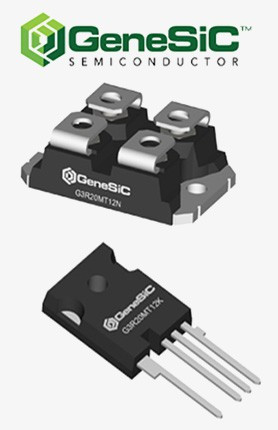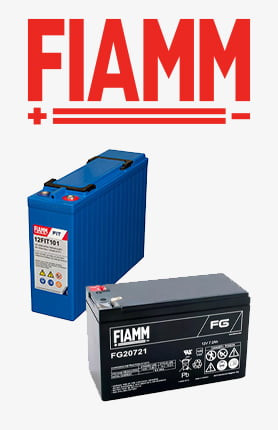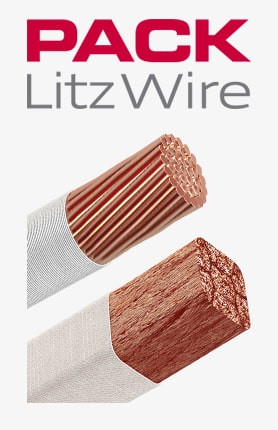-
BackX
-
Components
-
-
Category
-
Semiconductors
- Diodes
- Thyristors
-
Electro-insulated Modules
- Electro-insulated Modules | VISHAY (IR)
- Electro-insulated Modules | INFINEON (EUPEC)
- Electro-insulated Modules | Semikron
- Electro-insulated Modules | POWEREX
- Electro-insulated Modules | IXYS
- Electro-insulated Modules | POSEICO
- Electro-insulated Modules | ABB
- Electro-insulated Modules | TECHSEM
- Go to the subcategory
- Bridge Rectifiers
-
Transistors
- Transistors | GeneSiC
- SiC MOSFET Modules | Mitsubishi
- SiC MOSFET Modules | STARPOWER
- Module SiC MOSFET ABB’s
- IGBT Modules | MITSUBISHI
- Transistor Modules | MITSUBISHI
- MOSFET Modules | MITSUBISHI
- Transistor Modules | ABB
- IGBT Modules | POWEREX
- IGBT Modules | INFINEON (EUPEC)
- Silicon Carbide (SiC) semiconductor elements
- Go to the subcategory
- Gate Drivers
- Power Blocks
- Go to the subcategory
- Electrical Transducers
-
Passive components (capacitors, resistors, fuses, filters)
- Resistors
-
Fuses
- Miniature Fuses for electronic circuits - ABC & AGC Series
- Tubular Fast-acting Fuses
- Time-delay Fuse Links with GL/GG & AM characteristics
- Ultrafast Fuse Links
- Fast-acting Fuses (British & American standard)
- Fast-acting Fuses (European standard)
- Traction Fuses
- High-voltage Fuse Links
- Go to the subcategory
- Capacitors
- EMI Filters
- Supercapacitors
- Power surge protection
- TEMPEST emission revealing filters
- Surge arrester
- Go to the subcategory
-
Relays and Contactors
- Relays and Contactors - Theory
- 3-Phase AC Semiconductor Relays
- DC Semiconductor Relays
- Controllers, Control Systems and Accessories
- Soft Starters and Reversible Relays
- Electromechanical Relays
- Contactors
- Rotary Switches
-
Single-Phase AC Semiconductor Relays
- AC ONE PHASE RELAYS 1 series| D2425 | D2450
- One phase semiconductor AC relays CWA and CWD series
- One phase semiconductor AC relays CMRA and CMRD series
- One phase semiconductor AC relays - PS series
- Double and quadruple semiconductor AC relays - D24 D, TD24 Q, H12D48 D series
- One phase semiconductor relays - gn series
- Ckr series single phase solid state relays
- One phase AC semiconductor relays for DIN bus - ERDA I ERAA series
- 150A AC single phase relays
- Rail Mountable Solid State Relays With Integrated Heat Sink - ENDA, ERDA1 / ERAA1 series
- Go to the subcategory
- Single-Phase AC Semiconductor Relays for PCBs
- Interface Relays
- Go to the subcategory
- Cores and Other Inductive Components
- Heatsinks, Varistors, Thermal Protection
- Fans
- Air Conditioning, Accessories for Electrical Cabinets, Coolers
-
Batteries, Chargers, Buffer Power Supplies and Inverters
- Batteries, Chargers - Theoretical Description
- Modular Li-ion Battery Building Blocks, Custom Batteries, BMS
- Batteries
- Battery Chargers and Accessories
- Uninterruptible Power Supply and Buffer Power Supplies
- Inverters and Photovoltaic Equipments
- Energy storage
- Fuel cells
- Lithium-ion batteries
- Go to the subcategory
-
Automatics
- Spiralift Lifts
- Futaba Drone Parts
- Limit Switches, Microswitches
- Sensors, Transducers
-
Infrared Thermometers (Pyrometers)
- IR-TE Series - Water-proof Palm-sized Radiation Thermometer
- IR-TA Series - Handheld Type Radiation Thermometer
- IR-H Series - Handheld Type Radiation Thermometer
- IR-BA Series - High-speed Compact Radiation Thermometer
- IR-FA Series - Fiber Optic Radiation Thermometer
- IR-BZ Series - Compact Infrared Thermometers
- Go to the subcategory
- Counters, Time Relays, Panel Meters
- Industrial Protection Devices
- Light and Sound Signalling
- Thermographic Camera
- LED Displays
- Control Equipments
- Go to the subcategory
-
Cables, Litz wires, Conduits, Flexible connections
- Wires
- Cable feedthroughs and couplers
- Litz wires
- Cables for extreme applications
- Sleevings
-
Braids
- Flat Braids
- Round Braids
- Very Flexible Flat Braids
- Very Flexible Round Braids
- Cylindrical Cooper Braids
- Cylindrical Cooper Braids and Sleevings
- Flexible Earthing Connections
- PCV Insulated Copper Braids (temp. up to 85C)
- Flat Aluminium Braids
- Junction Set - Braids and Tubes
- Steel Braids
- Go to the subcategory
- Traction Equipment
- Cable Terminals
- Flexible Insulated Busbars
- Flexible Multilayer Busbars
- Cable Duct Systems
- Go to the subcategory
- View all categories
-
Semiconductors
-
-
- Suppliers
-
Applications
- CNC Machine Tools
- DC and AC Drives (Inverters)
- Energetics
- Energy bank
- Equipment and Components for Hazardous Areas [Ex]
- Equipment for Distribution, Control and Telecommunications Cabinets
- HVAC Automation
- Induction Heating
- Industrial Automation
- Industrial Protective Devices
- Machines for Drying and Wood Processing
- Machines for Thermoforming Plastics
- Mining, Metallurgy and Foundry
- Motors and Transformers
- Power Supplies (UPS) and Rectifier Systems
- Printing
- Temperature Measurement and Regulation
- Test and Laboratory Measurements
- Tram and Railway Traction
- Welding Machines
-
Assembly
-
-
Inductors
-
-
Induction devices
-
-
Service
-
- Contact
- Zobacz wszystkie kategorie
Energy Efficiency in Industrial Air Conditioners

What Does “Energy-Efficient Industrial Air Conditioner” Mean?
Not every industrial air conditioner deserves to be called energy-efficient. This term refers to devices that provide the same (or better) cooling performance as older models while consuming less energy.
Key technical indicators:
- SEER (Seasonal Energy Efficiency Ratio) – seasonal energy efficiency ratio,
- EER (Energy Efficiency Ratio) – the ratio of cooling capacity to power consumption in nominal mode,
- COP (Coefficient of Performance) – energy efficiency in heating mode (if applicable).
It’s also worth paying attention to the energy class and power consumption in various operating modes – including standby.
Real Savings – How Much Can You Save?
Choosing an energy-efficient air conditioner directly impacts electricity bills. For example, an industrial unit with 1000 W cooling capacity may consume between 800 and 1200 W in continuous operation, depending on its design and efficiency.
Comparing devices with different EER values:
- Standard model (EER = 2.5): 1000 W cooling with 400 W consumption,
- Efficient model (EER = 4.0): 1000 W cooling with 250 W consumption.
Assuming 5,000 hours of operation per year, the energy consumption difference can amount to several thousand kWh, translating to savings of PLN 2,000–3,500 annually (at industrial energy rates).
Operating Modes That Affect Energy Consumption
Modern industrial air conditioners are equipped with various modes that optimize energy use based on operating conditions:
- ECO mode / Night mode – limits cooling output when automation systems are idle,
- Ambient temperature-based operation – dynamically adjusts cooling capacity to current conditions,
- Automatic switching – e.g., between active cooling and passive (free cooling) when outdoor temperatures allow,
- Inverter control – smooth compressor speed regulation, reducing peak power usage.
Such modes can reduce average annual energy consumption by 25–40%.
Smart Thermal Management
Cooling systems are no longer standalone units. Increasingly, they are part of integrated industrial infrastructure management:
- Temperature and humidity sensors – enable automatic cooling intensity adjustment,
- Adaptive management – algorithms that learn cabinet heating patterns and optimize compressor operation,
- Predictive cooling – based on temperature trends, the unit increases performance before critical thresholds are reached,
- Integration with SCADA and BMS systems – full control from supervisory systems, remote monitoring, energy usage reports, alerts.
These solutions help avoid excessive operation and maintain the ideal balance between cooling and energy savings.
Technologies Supporting Energy Efficiency
Energy efficiency is the result of a comprehensive design approach, which includes:
- EC fans (Electronically Commutated) – more efficient and quieter than traditional fans, with precise speed control,
- Cabinet thermal insulation – reduces external temperature impact,
- Heat recovery systems – in some applications, used to heat other system components,
- Automatic condenser temperature control – affects compressor load and energy consumption,
- Optimized airflow design – air ducts designed to reduce resistance and improve heat exchange efficiency.
All these elements not only reduce operational costs but also increase the lifespan of internal cabinet components.
Summary and Recommendations
Energy efficiency in industrial air conditioners is not just a buzzword – it brings real technical and financial benefits. Thanks to modern operating modes, thermal management systems, and efficient technologies, it is possible to:
- reduce energy consumption by up to 30–40%,
- extend the service life of automation devices,
- reduce service and downtime costs,
- achieve a fast return on investment.
Recommendation: when selecting an industrial air conditioner, consider not only cooling capacity but also energy efficiency and the ability to integrate with control systems. It’s an investment in lower bills, greater reliability, and sustainable development.
Related posts
 Thermally conductive materials in power storages
Thermally conductive materials in power storages
 Measuring power and energy in electric circuits
Measuring power and energy in electric circuits
 Wentylatory przemysłowe - rodzaje, właściwości
Wentylatory przemysłowe - rodzaje, właściwości




Leave a comment